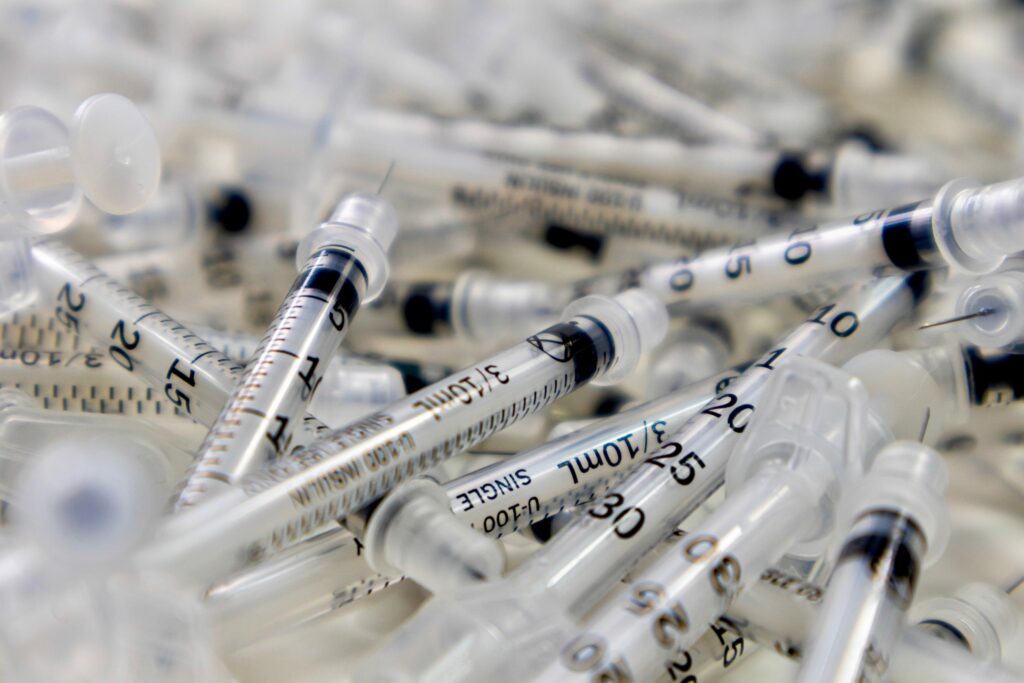Needles and syringes are commonly used in hospitals, physicians’ offices, clinics, and other various healthcare practices. We usually don’t think of them in positive light because of the pain sometimes associated with them. But what happens once they’ve been used?
What is a Sharps Container?
Once you’ve used a sharp (which is another name for needles and syringes), it must be placed in a special container. It’s made of a hard plastic and is leak-proof so the needles can’t puncture through and accidentally poke you, your staff, or your patients. Sharps containers also vary in shapes, size, color, and opacity to accommodate for the various sizes and shapes of your sharps.
How to Dispose of Sharps Containers
When your sharps containers are full, they’re ready to be disposed of. Their disposal requires the use of a medical waste disposal company. There are a couple ways your sharps containers can be picked up.
The first way is your medical waste disposal company send out a person to physically pick up your containers. The second way is via mail back. Your medical waste disposal company will send a pre-labeled package and pay for two-way shipping. All you have to do is place your sharps containers in the box and drop it off at the post office.
At the Treatment Facility
Once your medical waste provider has your sharps containers, they will transport them to a treatment facility. This where the used needles and syringes are treated so they are safe to go to the landfill. The way sharps are treated is via autoclave technology.
Autoclaving is an environmentally friendly method of treating hazardous materials. It uses steam in highly pressurized chambers to kill any bacteria living on the sharp. Once the needles and syringes have been autoclaved, they are ready to be transported to the landfill.
Waste Manifests
After your sharps have been autoclaved and sent to the landfill, your facility will receive a waste manifest from your medical waste disposal company. This document is proof that your waste was properly handled, treated, and disposed of. Be sure to hold onto this document for future audits.
Needles and syringes go through much of the same waste life cycle as other types of medical waste. It starts with placement in their respective containers to transportation to a treatment facility to the landfill. Regardless, they can still be potentially infectious and require the same treatment to keep the environment and people safe.



